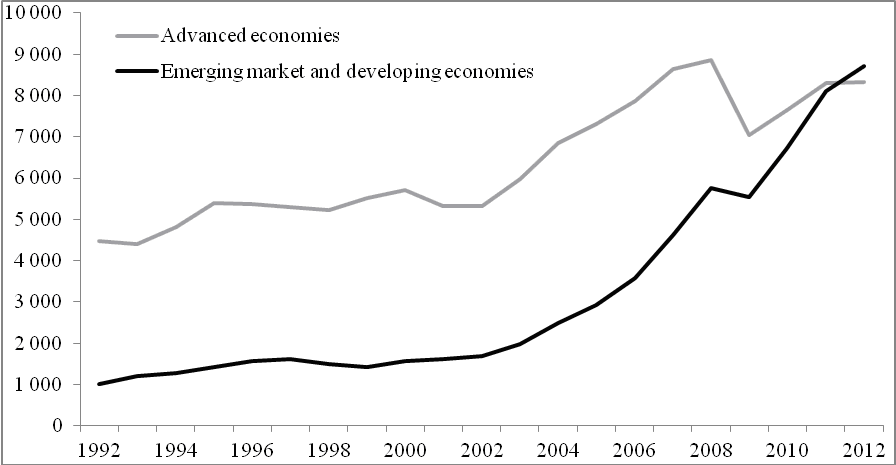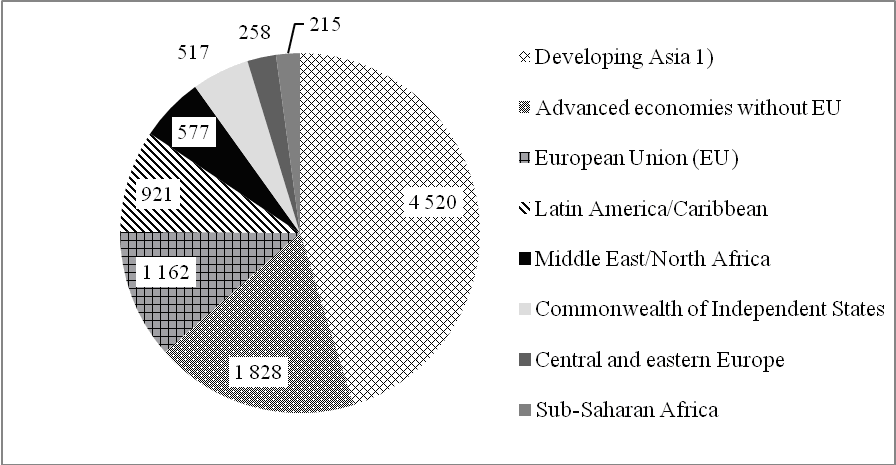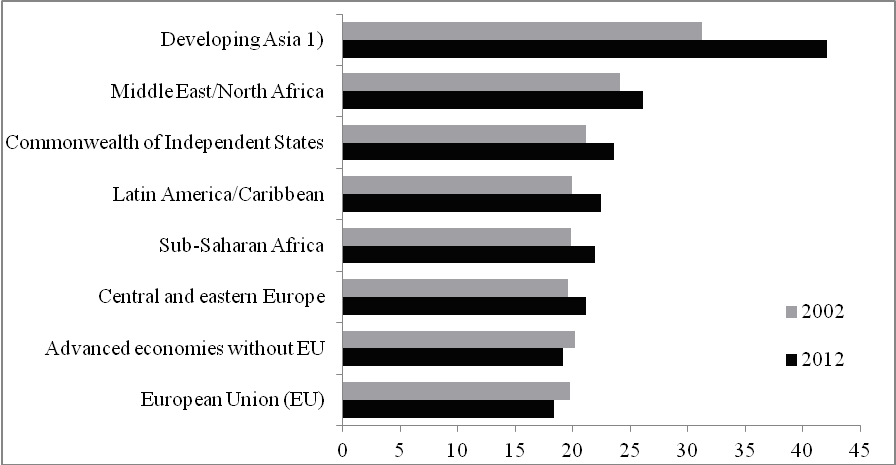Will the New Government Drive Major Changes in Economic Policy Making? – Thoughts Resulting from Observations of China’s Solar Energy Policies
March 6, 2013
These days we observe the transition to a new government in China, which will be endorsed by the National People’s Congress. The renewal of the government follows the election of a new Party leadership last November. Since then, all kinds of speculations and discussions have emerged concerning the expected ideas and potential political targets of the new Party leadership. Obviously some emphasis will be put on fighting corruption. But will their also be changes in economic policies? Will new ideas regarding the appropriate economic governance emerge? How will the new government handle state-owned enterprises? How much influence will the central government excise on large enterprises? How will it treat the tendency of local governments to intervene in and interlock with local business?
We do not know the answers yet. So let me look into a specific sector to highlight the questions at hand… and the degree of obscurity we still have to face.
Just a few days before the opening of the NPC meeting, the State Grid Corporation published a document called ‘Opinions regarding our services to smoothen grid integration of decentralized electricity generation’. What may appear to be a minor document is just the latest step in a wave of support initiatives for an ailing industry: the solar energy sector.
There are some interesting things that can be learned from reading these ‘Opinions’ in the context of the politics of the last months:
– The ‘Opinions’ confirm – just a few days before the new government steps in – a policy direction that was prepared over the last year. The 12th FYP for the solar energy manufacturing sector endorsed in February 2012 as well as the 12th FYP for solar energy electricity generation propagated in July 2012 both already announced support for decentralized solar PV use and grid integration. Hence, whatever the changes are at the leadership level, at the more concrete policy level, we can observe continuity at least over the last twelve months. The idea to support the ailing solar industry by pushing for decentralized installations was a highly contentious issue before 2012, but has survived the political struggles of the last year. So, either the new leadership already had considerable influence at that time, or the differences between the new and former leaders are not that big at all.
– The ‘Opinions’ substitute a document called ‘Preliminary opinions regarding our services to smoothen grid integration of decentralized solar energy electricity generation’ published in October 2012. Between October and late February the wind energy and other renewable energy sectors have managed to enter the ‘Opinions’ and therefore to secure the favourable service conditions originally promised by State Grid Corporation only to solar-based electricity generation. At the same time the promised speed of services was somewhat reduced. This demonstrates several characteristics of policy making in China today: First, rules and regulations are often initially published in a preliminary version in order to allow for experiments and later corrections. Second, changes to the preliminary versions actually happen. Third, a considerable degree of lobbying seems to occur in this process. Again, this hints more to continuation than change in Chinese economic policy making.
– The ‘Opinions’, published by the State Grid Corporation, document better coordination between different ministries and actors in energy policies. Past policies and instruments to support the national solar industry are said to have suffered from the absence of support by the State Grid Corporation. As the ‘Opinions’ follow the ideas advanced in the sectoral 12th FYPs of the Ministry of Industry and Information Technology and the Energy Department of the NDRC respectively, it seems that this time the State Grid Corporation was better integrated into the policy making process than before. Allegedly State Grid was not consulted for the design of the ‘Golden Sun’ policy, which was initiated in 2009 to bolster PV deployment in China, and therefore did not support implementation actively. So, the ‘Opinions’ may indicate a better handling of a big power player like the State Grid. However, it also confirms the powerful position of State Grid with regard to energy policies.
– The ‘Opinions’ promise that State Grid will cover most of the grid integration costs for renewable energy projects apart from the investment in the renewable energy technology as such. It will also allow for separate measurement of the electricity used and the electricity fed into the grid by the installer. While the former will obviously lessen the overall investment costs and the latter will provide a service needed to calculate decentralized electricity generation, so far the electricity prices or, more accurate, the level of subsidies paid for solar PV electricity generated by decentralized projects have not yet been defined. Therefore, as in the past, it is unclear whether the new policies will trigger a substantial investment wave in the national market.
There seems to be more continuation than change to be discerned from this example. There is support for local solar energy deployment, but it still is half-hearted. And, alas, the impression of continuation is confirmed by Chinese media reports complaining that these and other initiatives to support the local industry are designed in a way that favours state-owned and state-backed companies in the solar manufacturing sector. In the past the Chinese solar manufacturing industry excelled in international markets mainly due to the success of private enterprises. In contrast, the low level of regulatory transparency, like the lack of a clear rule on subsidies, in the promotion of the solar energy at home, implies a policy bias toward state-backed companies. These can take higher risks and receive investment support from local banks even in situations where the investment environment is volatile and the expected return on investment is questionable.
In sum, for the time being we should expect major changes and reshuffles in the Chinese solar sector as a result of a high level of continuation in the general course of economic policies.

Doris Fischer
Professor, University of Würzburg, China Business and Economics
![]()
![]()





